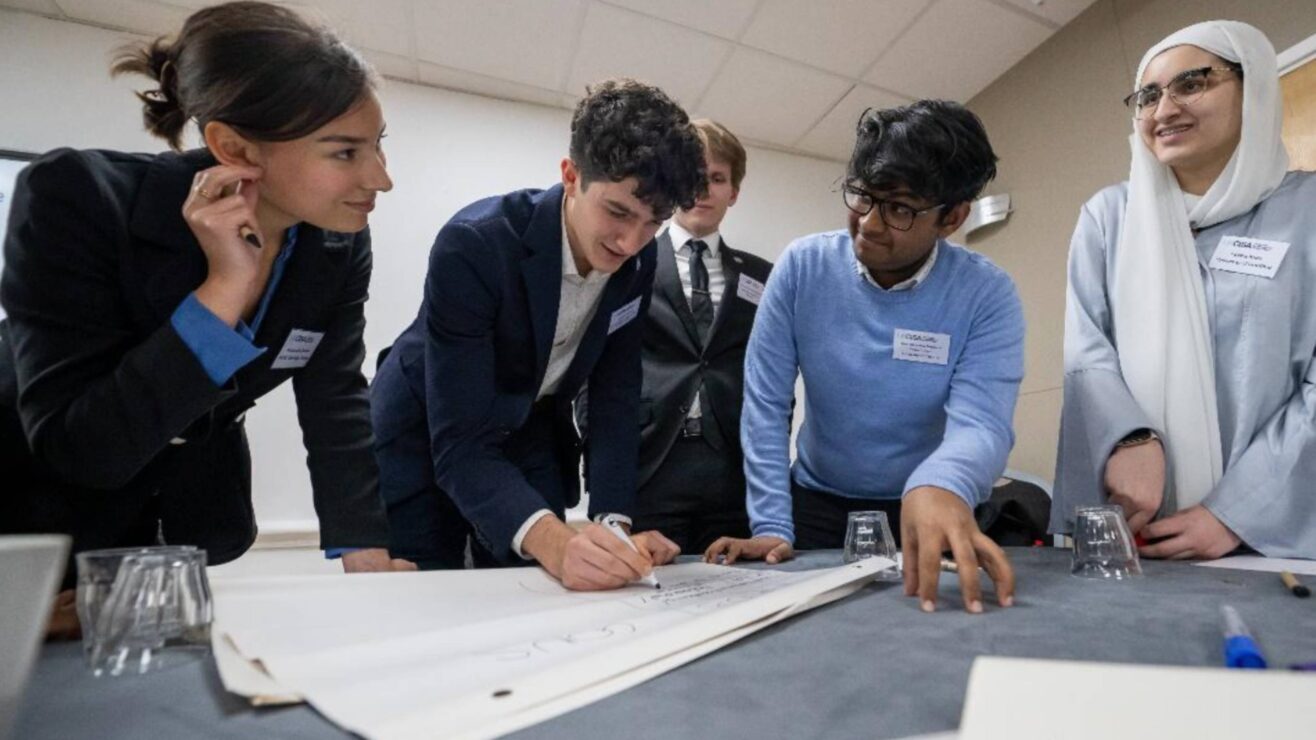Debates on the civic role of universities have persisted for decades, if not centuries, ranging from proponents of the more cloistered university focused sharply on academic excellence to advocates of the more socially active university, engaged in communities beyond the campus gates.
Regardless of where one lands on that spectrum, the significant impact of UK universities on their local communities, and their global sway, is plain to see.
However, an often-neglected perspective in these debates is universities viewed as part of our national and local social and cultural infrastructure.
Social and cultural infrastructure refers to spaces, services, and structures which foster community cohesion and strengthen social and cultural ties – libraries and community centres being prime examples. At the British Academy, our work on social and cultural infrastructure examines the role different institutions, sectors, and the actors within them can play in sustaining and building this infrastructure.
Examining the higher education sector from this perspective sheds light on how universities can serve as crucial venues for community engagement and the growth of social capital. It is also an important route into making sense of how they interact with other forms of social and cultural infrastructure – from local schools and sports clubs to museums and heritage sites.
This vantage point not only underscores universities’ civic importance but also offers a nuanced understanding of their increasingly wide impact across society.
Balancing the hyperlocal and the global
Universities engage with their localities in different ways, and to varying extents. Historically, some were conceptualised as belonging to a particular place, and as having a “civic” purpose as an institution that would contribute to their locality. Others, such as many founded in the UK in the 1960s, were set up with the vision of creating a university which was a community by and within itself, countercultural, and set up to some extent in opposition to mainstream society.
Given these differences, community as a concept will be interpreted and enacted differently by each university. Adding complexity, universities which may have previously foregrounded their position as global institutions are now combining this with an emphasis on their contribution to their locality and immediate communities.
Building bridges
This infrastructure perspective is valuable for examining the partnerships and interactions that universities engage in within their local communities. For example, our early work suggests that key to these initiatives are often university staff whose roles are dedicated to bridging the gap between academic institutions and local organisations. For these initiatives to be successful, universities need to have structures – and cultures – in place to facilitate and foster long-term relationship building and collaboration. Underpinning all this should be a shared clarifying purpose between all the organisations involved, including the university.
Building robust connections between universities and local authorities is pivotal in this context. At present, universities and local authorities are still not always seen as natural partners, and active steps are needed to foster these relationships. Additionally, the variations between universities, localities and local authorities means there is no “one size fits all” model.
An interesting and impactful case study can be found in Essex where Essex County Council and the University of Essex identified a gap in local government knowledge on data science and created a post of Chief Scientific Adviser for the county, to help researchers and policymakers “work together to improve public services across the county.”
Connecting constituencies
Universities can be thought of as comprising different “constituencies” spanning academic staff, professional staff, students’ union officers and staff, and students. These groups all engage with local social and cultural infrastructure in a variety of ways.
Some staff employed by universities will have lived in the area for a long time and be fully part of the local community and engage strongly with local social and cultural infrastructure (for example as trustees for local organisations, school governors, or volunteers in some capacity). Conversely, staff on temporary or short-term contracts may not feel as embedded in the community and locality, while increased hybrid working and cost-of-living pressures may encourage commuting from further afield.
The extent of a university’s engagement with local communities and infrastructures varies significantly, influenced by physical and structural factors. The location of a university, whether within or outside a town or city, and the accessibility and openness of its campus to the wider community play crucial roles. While some universities maintain “closed campuses” that limit local community access, others may face tensions with local communities over developments like off-campus student accommodations.
From a student’s perspective, the transitory nature of university life can sometimes deter engagement with local social and cultural infrastructure. Often perceived as temporary residents, students face challenges in being recognised as stakeholders in their localities. Addressing this issue requires innovative strategies to foster connections between students and permanent residents, ensuring both groups benefit from a vibrant, integrated community.
Expanding the conversation
Universities already play vital roles in creating, supporting and enhancing the social and cultural infrastructure of places. Using the lens of social and cultural infrastructure to look at the many ways they contribute towards, and interact with, their locality can bring fresh insights as to how these contributions can be further supported and enhanced.
At the British Academy, we’ve been convening experts from across the higher education and research sector to begin to explore this question of universities as social and cultural infrastructure, and we’ll continue these conversations during 2024.
This will include a series of activities to be held in conjunction with the National Civic Impact Accelerator (NCIA) delving deeper into aspects including the links between social and cultural infrastructure with R&D and innovation, and how partnerships, incentives and funding all impact upon universities’ role in this space.













As academic lead on the Academy’s work on Social and Cultural Infrastructure, I am seeing great enthusiasm from colleagues within and beyond the university sector for making the most of universities’ potentially pivotal roles, both locally and nationally, in sustaining a healthy economy and society. A significant policy challenge is the need for a coherent national and UK strategy for universities, and that current financial, regulatory and market pressures on individual institutions may militate against the scope for and realization of such a strategy. As The British Academy’s work progresses in this area it welcomes participation, contribution and collaboration from a wide range of voices and expertise.
The concept of universities as part of the national and local social and cultural infrastructure offers a helpful lens through which to view their civic role. It suggests that universities can be more than just places of learning; they can be catalysts for community cohesion, social capital growth, and cultural enrichment. This aligns with the National Civic Impact Accelerator’s vision for universities to transform lives and places by being truly civic in their approach. By fostering stronger connections with local schools, sports clubs, museums, and heritage sites, universities can enhance their contributions to the social and cultural fabric of their communities.
I welcome the recognition by the BA Team working on Social and Community Infrastructure of Places of the key role civically minded university can play. and am pleased that the NCIA is helping take this work forward . As elaborated in this NCI podcast the civic university movement has a long history but is now accelerating in the face of challenging questions around who and what are universities for https://www.youtube.com/watch?v=XoBMuOlBznc